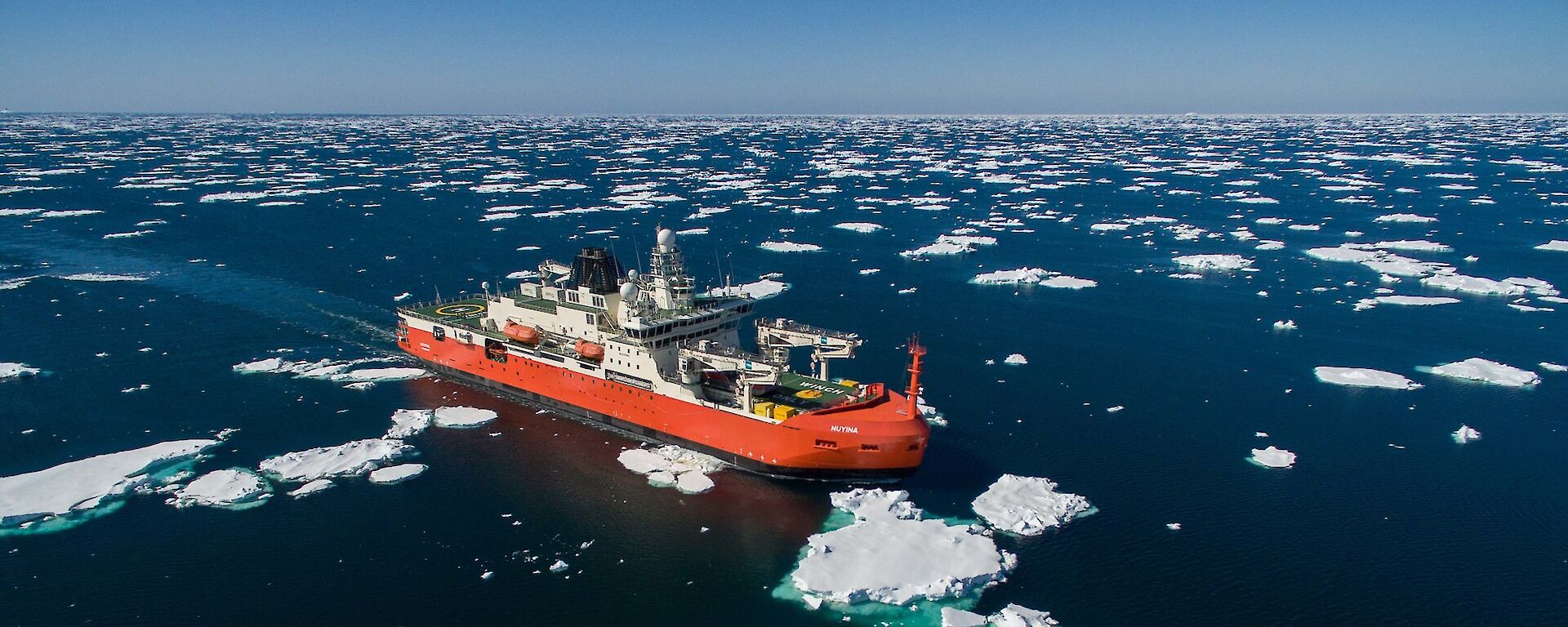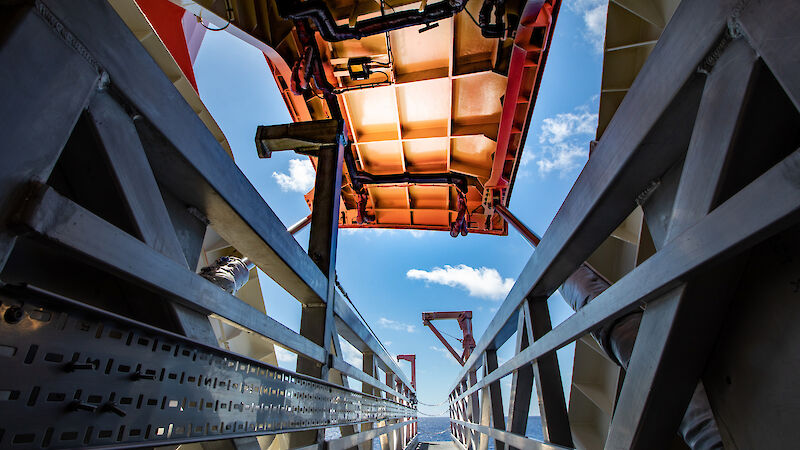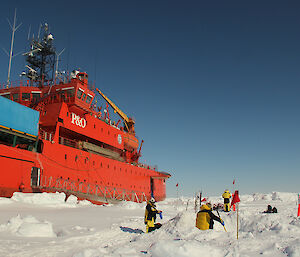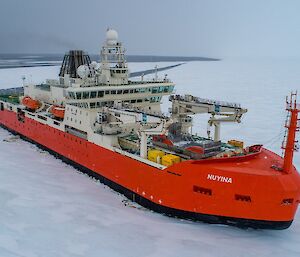Among the more specific requirements, however, is the need to use the ship as a base from which to deploy people or instruments by helicopter to remote locations on the Antarctic ice sheet or within the sea ice zone.
Other airborne operations include ‘remote sensing’ of ice thickness and snow cover using specially-equipped helicopters or Uncrewed Aerial Vehicles.
Scientists can also deploy locally on to the sea ice from an access ramp off the ship or by watercraft or helicopter. Once on the ice they collect ice cores, measure the temperature, thickness and other properties of sea ice and snow, and investigate its chemistry and the ecosystem it supports.
RSV Nuyina also has a retractable boom, extending about 10 metres in front of the ship, on which to mount sensors. Potential sensors could include an electromagnetic induction, laser altimeter and snow radar sensor package. As the ship travels, this sensor suite could provide real-time information on snow and ice thickness that enhances ship navigation and planning of on-ice field experiments.
Ice profile data from such sensors also improves knowledge of the thickness distribution of Antarctic sea ice and snow cover and helps to calibrate satellite estimates of sea ice thickness.
Sea Ice Access Ramp
The Sea Ice Access Ramp serves as a gangway for the transfer of personnel, vehicles and equipment between the vessel and Antarctic sea ice. The Sea Ice Access Ramp is constructed and adapted for lifting with the main cargo crane and mounting at the shell door platform at the forward port side of Deck 4.
The ramp main dimensions are:
- Length: 14 m (2 x 7 m)
- Clear width: 1.7 m (approx.)
- Maximum Load: 1,000 kg (12 persons or 1 vehicle)
- Slewing angle: 20° each side
- Angle of inclination: from 0° to 21°
Forward Outboard Deployment System (FODS)
The Forward Outboard Deployment System is a semi-automatic system designed to deploy an aluminium gangway from a hatch using hydraulic actuators. The hatch is on the starboard side of Deck 6 at the bow. The gangway can be positioned horizontally or vertically depending on science requirements. The design load is 2.5 kN/m2 at the gangway extremity and the Safe Working Load is 300 kg.





